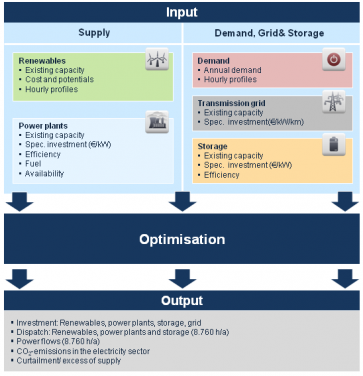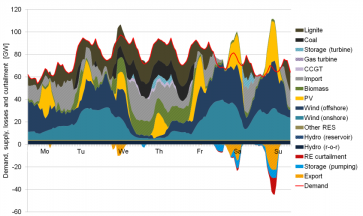The Enertile optimisation model
Enertile optimisation is an energy system optimization model developed at the Fraunhofer Institute for System and Innovation Research ISI. The model focuses on the power sector, but also covers the interdependencies with other sectors, especially heating/ cooling and the transport sector. It is a used mostly for long-term scenario studies and is explicitly designed to depict the challenges and opportunities of increasing shares of renewable energies. A major advantage of the model is its high technical and temporal resolution.
Integrated optimization of investments and dispatch
Enertile optimizes the investments into all major
infrastructures of the power sector, including conventional power generation,
combined-heat-and-power (CHP), renewable power technologies, cross-border transmission
grids, flexibility options, such demand-side-management (DSM) and power-to-heat
storage technologies. The model chooses the optimal portfolio of technologies
while determining the utilization of these for in all hours of each analysed
year.
High spatial coverage
The model currently depicts and optimizes Europe, North Africa and the Middle East. Each country is usually represented by one node, although in some cases it is useful to aggregate smaller countries and split larger ones into several regions. Covering such a large region instead of single countries becomes increasingly necessary with high shares of renewable energy, as exchanging electricity between different weather regions is a central flexibility option.
High temporal resolution
The model features a full hourly resolution: In each analysed year 8,760 hours are covered. Since real weather data is applied, the interdependencies between weather regions and renewable technologies are implicitly included.
Detailed picture of renewable energy potential and generation profiles
The potential sites for renewable energy are calculated on the basis of several hundred thousand regional data points for wind and solar technologies with consideration of distance regulations and protected areas. The hourly generation profile is based on detailed regional weather data.









